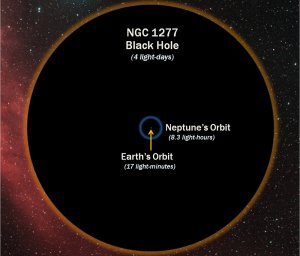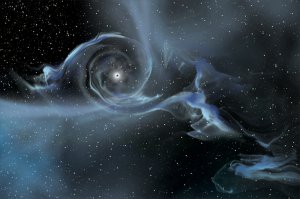

As a species, we all contemplate the existence of extra-terrestrial civilizations living in the far reaches of the universe, and we imagine that they have mind-bogging technology that we can’t even being to drum up using our collective imagination. So far though, there have been no clear indicators (well, depending on who you ask) that there is anything beyond homosapiens, which is equal parts depressing and terrifying. After all, if aliens were real, surely there would be some clear signs of their existence, right? Well, there are all sorts of theories put forth in the Fermi paradox that postulate why there may be no signs…everything ranging from our technology being so basic compared to theirs that we are unable to pick up whatever radio signals they have sent out into the abyss, to ET’s knowing we are here, but choosing not to reach out to us to avoid hindering our progress. However, a new theory has been put forth that, frankly, makes all of the alternatives seem kind of lame.

Earlier this year, astronomers announced a colossal find (quite literally, colossal): a series of ‘ultra-massive’ black holes at the center of many distant galaxies. Each of of them are more than ten times the size of our solar system in diameter – with event horizons stretching out more than five times beyond the orbit of Pluto. Such black holes are far larger (and much more massive) than anything ever predicted in the past. One of the largest, which lies at the center of an egg-shaped galaxy more than 335 million light-years away (called NGC 4889), has the mass of more than 21 billion suns combined. Another behemoth is at the galactic center of NGC 3842, which is 331 million light-years away. This one contains the mass of 9.7 billion suns. In comparison, the supermassive black hole at the heart of the Milky Way; Sagittarius A* – contains the mass of about 4.1 million solar masses, with a surface area extending no more than 17 light-hours (120 AU) across.
Although unexpected, these black holes presented some interesting questions. Namely, how in the heck did they become so massive? Typically, black holes are formed following the gravitational collapse of a massive star, but they can become significantly larger from consuming stars and other interstellar materials. And then there are galactic collisions, where two central black holes collide and merge – before becoming exponentially more massive (the event horizon also increases in size, in this scenario). However, no supermassive black hole this massive have ever been discovered before in the past.
Now – as we’ve touched on before (in one of our articles about what would happen to you if you were sucked into a black hole and were somehow able to survive being ripped apart), we’ve noted that the surface of a black hole becomes less extreme the larger the black hole is (in surface area, instead of mass). So hypothetically, if we were able to find a supermassive black hole the size of our solar system, it would be possible for there to be a ‘stable’ area within the event horizon, which would theoretically allow stars or planets to orbit the central singularity WITHOUT being torn into a flurry of subatomic particles.

In particular, there is a certain type of black hole that is ideal for this sort of thing. The inner workings of Reissner-Nordström black holes, which are both or charged and rotating, have been studied by Vyacheslav Dokuchaey, a Russian Cosmologist from Moscow’s “Institute for Nuclear Research of the Russian Academy of Sciences.” According to him, not only could a planet remain in a stable orbit within the active galactic nuclei – or the ‘inner Cauchy horizon’ of the black hole (where the fabric of space-time becomes somewhat ‘normal’ again) – but also “living inside the eternal black holes is possible in principle, if these black holes are rotating or charged and massive enough for weakening the tidal forces and radiation of gravitational waves to acceptable level.”
Now, when I originally read this story, the first thought that crept up into my mind was about how such a species would retain energy. As you all know (or at least I hope you know), the sun is our primary source of energy. Without it, our plants would be unable to undergo photosynthesis, killing most of the plants on Earth, before ultimately killing us when we succumb to starvation. So where would an advanced civilization living within the confines of a black hole derive energy from?

According to Dokuchaev, “The naked central singularity illuminates the orbiting internal planets and provides the energy supply for life supporting,” he adds. “Some additional highlighting during the night time comes from eternally circulating photons.” So any civilization capable of doing so, which would probably rank as a type III advanced civilizations on the Kardashev scale (we, on the other hand, haven’t made it to type I yet), would derive light and heat from orbiting photons and energy from within the singularity itself. More interestingly, such a civilization would be completely closed off to the rest of the universe beyond the event horizon, just as we too, can not see anything inside of it. Sounds like a pretty spiffy hiding spot, if you ask us (talk about lonely though.) Except for, you know, all of the radiation from the stars and other interstellar materials falling in.